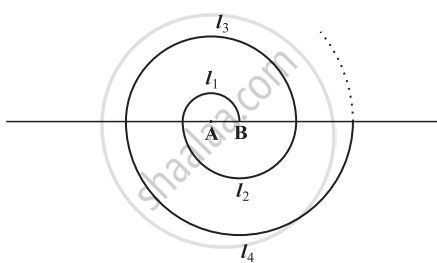Advertisements
Advertisements
प्रश्न
Find the sum of the integers between 100 and 200 that are
- divisible by 9
- not divisible by 9
[Hint (ii) : These numbers will be : Total numbers – Total numbers divisible by 9]
उत्तर
i. The numbers (integers) between 100 and 200 which is divisible by 9 are 108, 117, 126,..., 198.
Let n be the number of terms between 100 and 200 which is divisible by 9.
Here, a = 108, d = 117 – 108 = 9 and an = l = 198
`\implies` 198 = 108 + (n – 1)9 ...[∵ an = l = a + (n – 1)d]
`\implies` 90 = (n – 1)9
`\implies` n – 1 = 10
`\implies` n = 11
∴ Sum of terms between 100 and 200 which is divisible by 9 is
Sn = `n/2[2a + (n - 1)d]`
`\implies` S11 = `11/2[2(108) + (11 - 1)9]`
= `11/2[216 + 90]`
= `11/2 xx 306`
= 11 × 153
= 1683
Hence, required sum of the integers between 100 and 200 that are divisible by 9 is 1683.
ii. The sum of the integers between 100 and 200 which is not divisible by 9 = (sum of total numbers between 100 and 200) – (sum of total numbers between 100 and 200 which is divisible by 9) ...(i)
Total numbers between 100 and 200 is 101, 102, 103,..., 199
Here, a = 101, d = 102 – 101 = 1 and an = l = 199
`\implies` 199 = 101 + (n – 1)1 ...[∵ an = l = a + (n – 1)d]
`\implies` (n – 1) = 98
`\implies` n = 99
Sum of terms between 100 and 200,
Sn = `n/2[2a + (n - 1)d]`
`\implies` S99 = `99/2[2(101) + (99 - 1)1]`
= `99/2[202 + 98]`
= `99/2 xx 300`
= 99 × 150
= 14850
From equation (i), sum of the integers between 100 and 200 which is not divisible by 9
= 14850 – 1683 ...[From part (i)]
= 13167
Hence, the required sum is 13167.
संबंधित प्रश्न
How many terms of the series 54, 51, 48, …. be taken so that their sum is 513 ? Explain the double answer
A spiral is made up of successive semicircles, with centres alternately at A and B, starting with centre at A of radii 0.5, 1.0 cm, 1.5 cm, 2.0 cm, .... as shown in figure. What is the total length of such a spiral made up of thirteen consecutive semicircles? (Take `pi = 22/7`)

[Hint: Length of successive semicircles is l1, l2, l3, l4, ... with centres at A, B, A, B, ... respectively.]
Find the sum to n term of the A.P. 5, 2, −1, −4, −7, ...,
If Sn denotes the sum of the first n terms of an A.P., prove that S30 = 3(S20 − S10)
Q.14
Find the sum of numbers between 1 to 140, divisible by 4
Find the sum:
1 + (–2) + (–5) + (–8) + ... + (–236)
Find the sum of those integers between 1 and 500 which are multiples of 2 as well as of 5.
Find the sum of those integers from 1 to 500 which are multiples of 2 as well as of 5.
Find the sum of first 16 terms of the A.P. whose nth term is given by an = 5n – 3.
